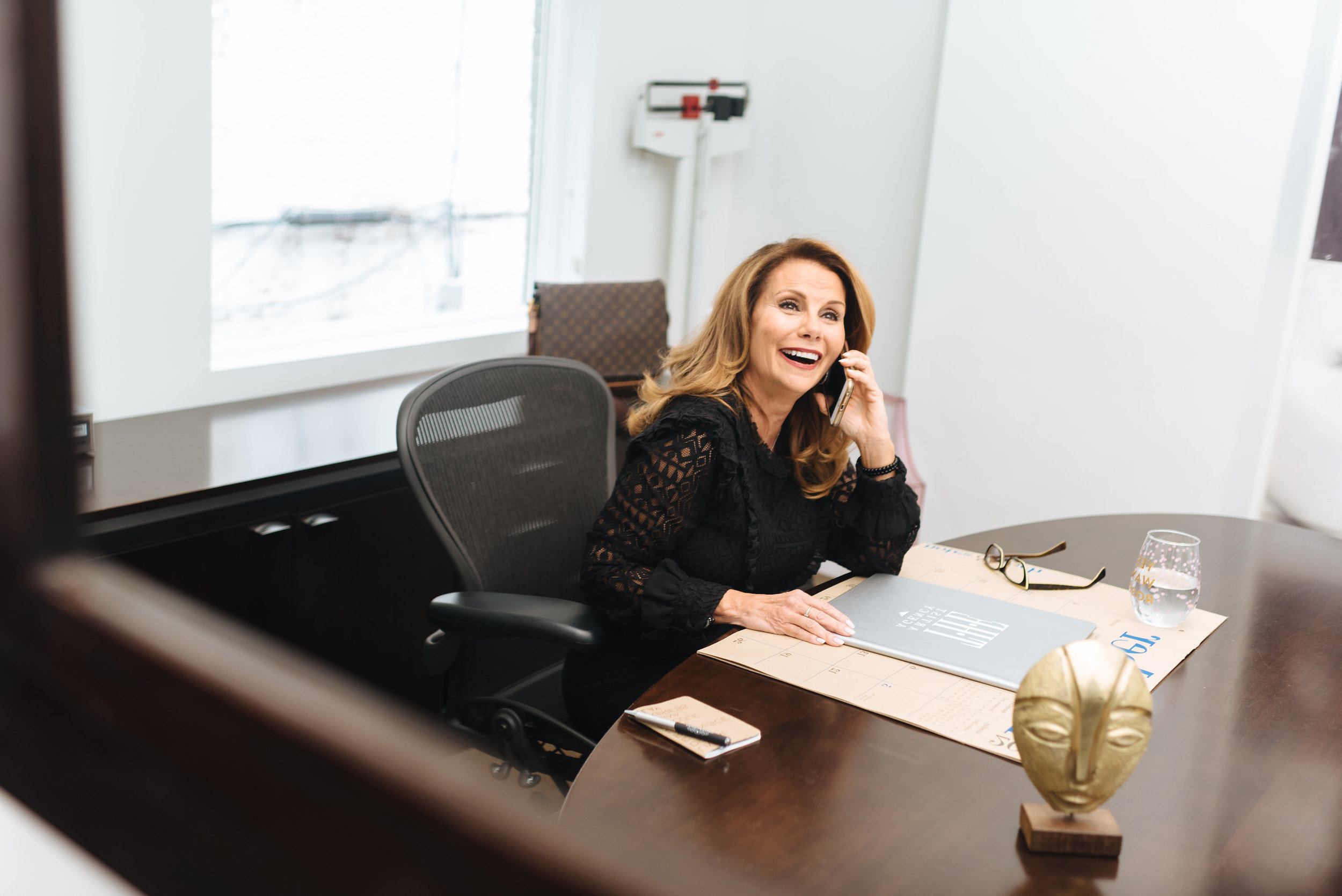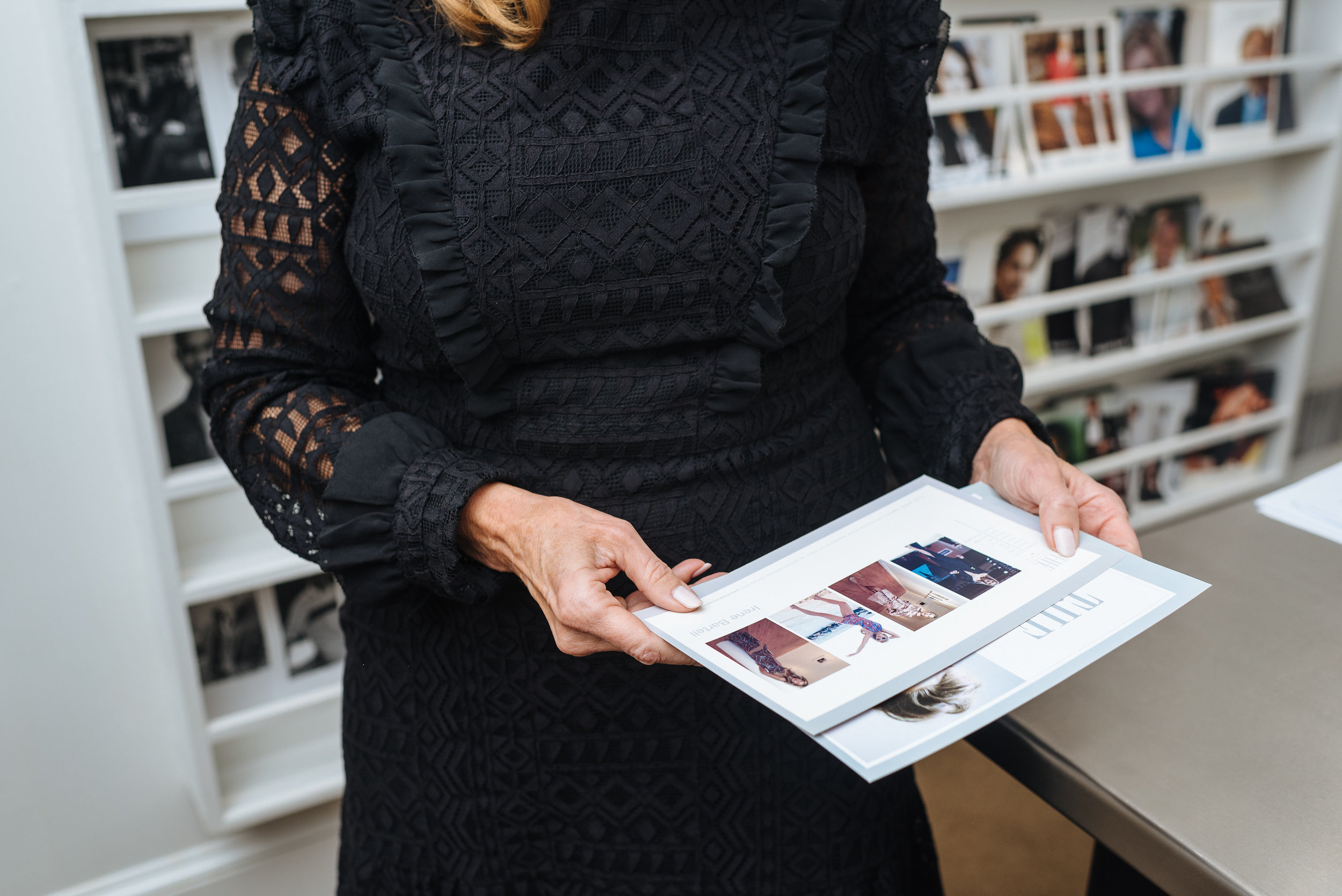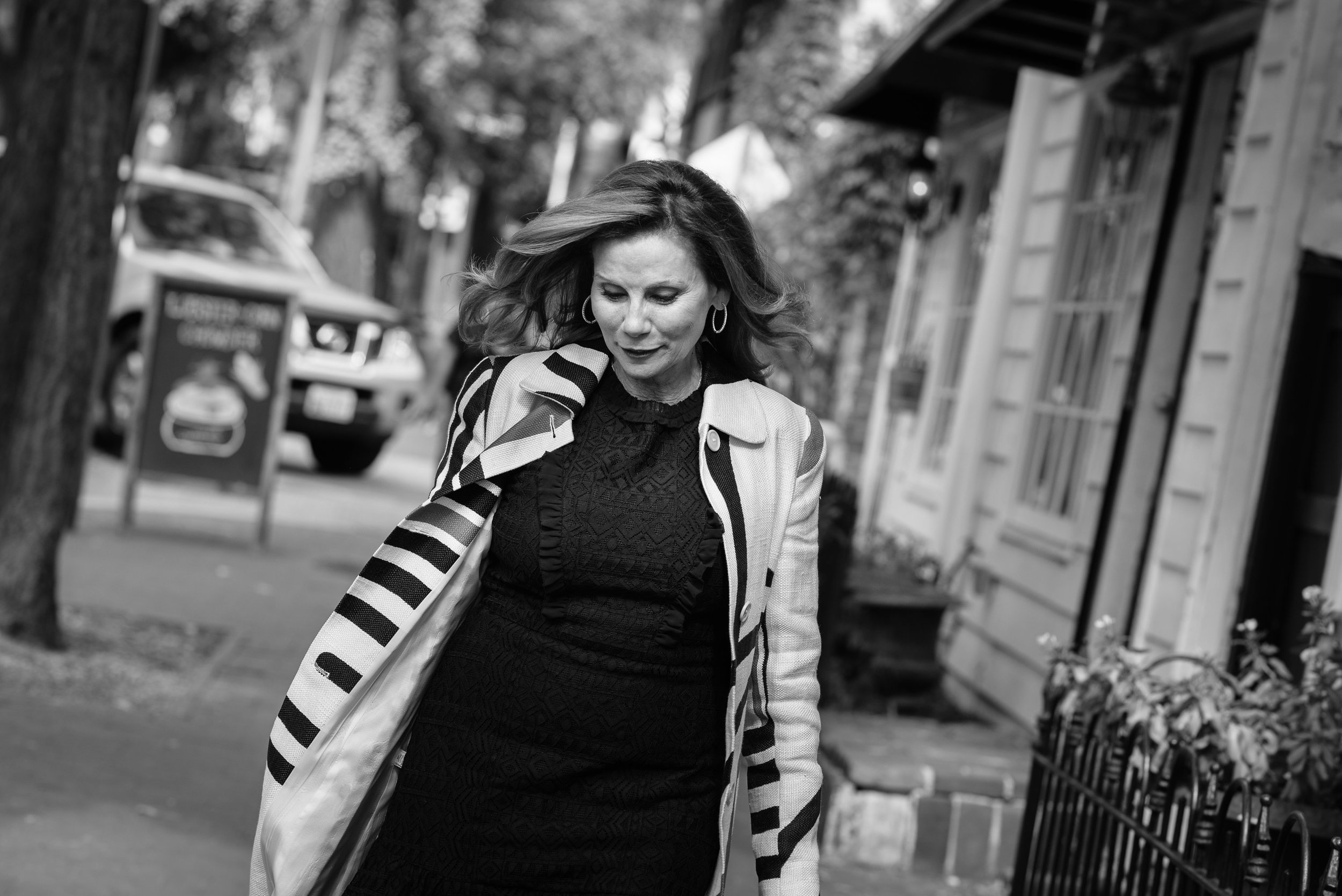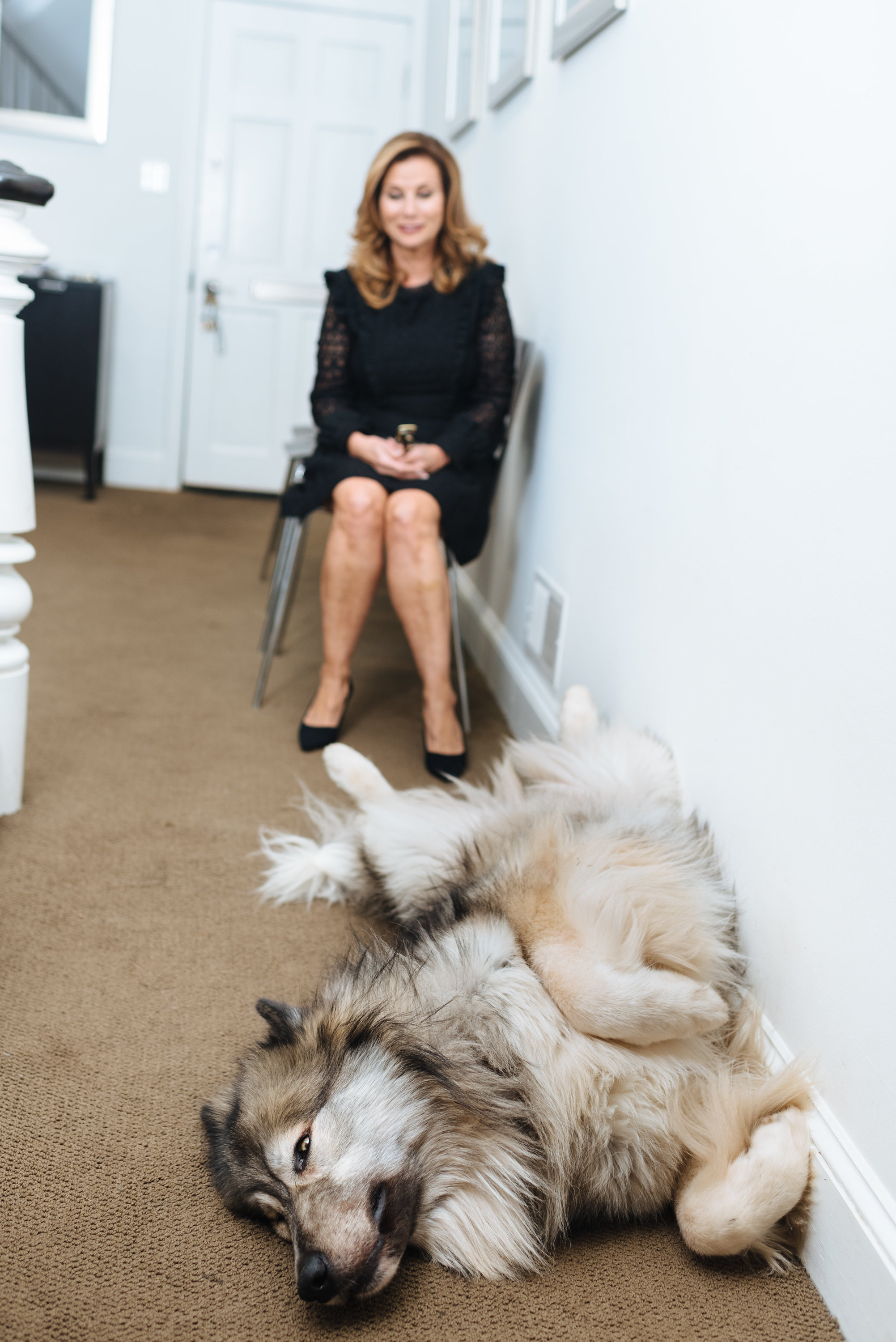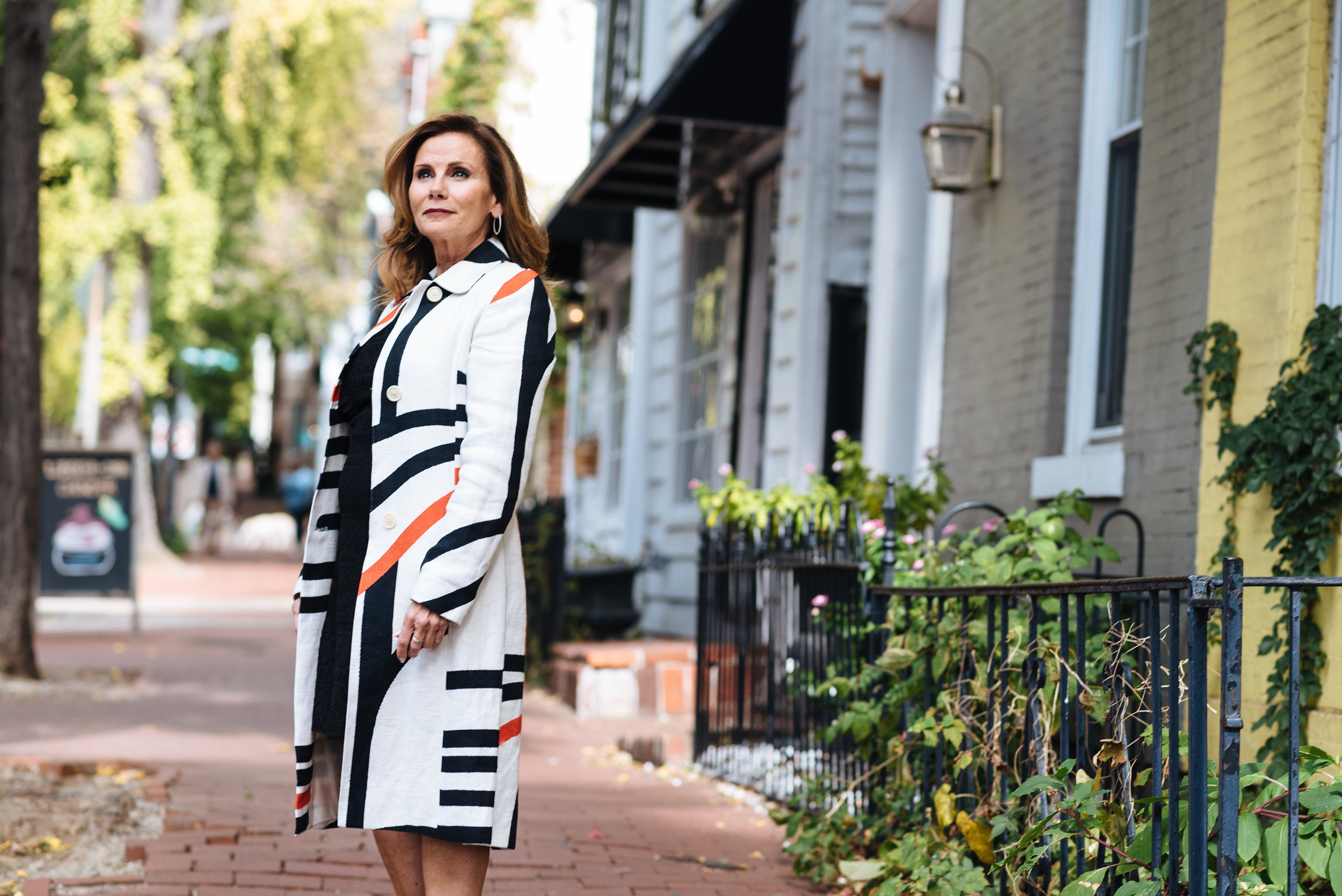‘I Saw Fashion and Beauty Everywhere’
Lynda Erkiletian was the last one to get paid on set. It wasn’t unusual for her to wait six months before she saw a check.
She saw a problem, and she also saw a solution.
‘I got my cosmetology license, started getting celebrity type clients, and was doing make-up and hair for the movie junkets. In those five years, neither my colleagues nor I were getting paid on time. I felt like it was discouraging a lot of really talented people from working in DC; instead they would move to New York where there were agencies that represented stylists in the same way they represented models. As much as I loved my work, I thought I really should start my own agency.’
Doing so would require Lynda to sacrifice the creative side of her career, but she saw an opportunity to address an industry that—in 1980s Washington—hadn’t yet been represented professionally.
‘At the time, there was nobody clients could call to facilitate, to find out which stylists were available and what it would cost them. It was kind of hard to explain my vision to people of the supply creating the demand—if we build it, they will come! They would wonder…well, who’s coming? But I saw fashion and beauty everywhere. In the boutiques, in the streets, and in the flavor of our city.’
So build it she did. In 1985, Lynda rented a 300-square-foot office in Georgetown, and—equipped with only herself, a phone with call waiting, and an idea—opened T.H.E. Artist Agency.
Lynda cultivated five stylists beforehand to ensure an adequate talent supply, and spent the next 12 months begging art directors to meet with her. A year in, she added 15 of the region’s top models—rounding out her vision of a boutique agency that could grow the concept of fashion and beauty, and enhance local advertising.
‘It was a lot of reaching out, developing portfolios that represented the talent’s work and circulating them among potential clients (before that was all online). Some art directors were tired of pulling talent from New York and paying per diems, and they were thrilled with what we created. It became a win-win concept, but it took five years for people to trust that we weren’t going to go out of business.’
Part of that trust came from T.H.E. Artist Agency’s payment model. Lynda adopted a voucher system that was the standard in New York—loaning her talent money at the 30-day mark against their booking.
‘That’s what I think was the turning point of the trust from our talent base. They’re getting paid before we are. It was important for us to do something differently to change the negative associations many had with local agencies. We decided to make a commitment to our clients and our talent.’
Elizabeth Centenari soon joined the company. She had grown up in the industry and a powerful partnership ensued. After moving to multiple office locations throughout Georgetown, she and Lynda relocated the business to its current building on Potomac Street, which they purchased together. The two were unstoppable—and so was the agency.
‘As I saw the growth, I knew it couldn’t do it by myself. Elizabeth and I would find people who were really young and hungry and teach them.’
Much of Lynda’s early work involved guiding and educating talent she felt had potential, but weren’t quite ready.
‘All of the models back in the 80s had portfolios of shots with oil base all over them, on top of a Ferrari. That’s not what the advertisers are looking for. I’d say, you can make pretty pictures, but let’s make pictures that get us work. We need raw, clean beauty. I don’t need you all dolled up. The client needs to see what you actually look like.’
Today, those portfolios are a thing of the past. Thanks to the ever-churning beast that is social media and technology, a model can test on a Tuesday and have their photos out in the world that same day.
Unfortunately, accessibility also comes with increased vulnerability. Lynda says human traffickers prey on models and actors, setting up online ghost businesses and trolling for people who have a weakness.
‘We’re in an industry where people’s egos and desires sometimes cause them to move too hastily, and they get themselves in big trouble,’ says Lynda, who supports human trafficking-awareness organizations Innocents At Risk and the A21 Walk For Freedom—the latter in honor of one of her agency’s former models who passed away last year.
‘I’m a huge proponent of being safe, using the buddy system, and not reaching out to just anybody. It’s our job to educate people on how to protect themselves. We manage their careers so that they don’t do things that could be harmful.’
Through all of the agency’s challenges—arguably the worst when all 62 Hecht’s stores sold, a weekly client—Lynda has embraced the next frontier. Her current baby is the agency’s YouTube channel, T.H.E Network, which showcases talent, shares behind-the-scenes spotlights and offers frequent tutorials.
‘Thousands of people were reaching out with questions every month, and with this channel we are able to give people around the world the opportunity to learn how to become a professional model, or an on-location stylist. If you just keep doing what you do best, continuing to cultivate new talent, and you have a great rapport with your client base, when the work is out there it will come to you.’
Recently, it came in the form of Capitol File. The D.C. magazine historically outsourced its editorial to New York, but asked T.H.E. Artist Agency to do it all for their experimental issue.
‘That made me feel so proud for us. It’s an exciting time to be in this industry, and I love this movement that’s happening in our city with creatives.’
Lynda stepped out of the nucleus 30 years ago, but her work at the agency has been an entirely different pay off.
‘The creative life of a stylist that I left behind —now I get to live everyone else’s creative life, and protect them at the same time.’
